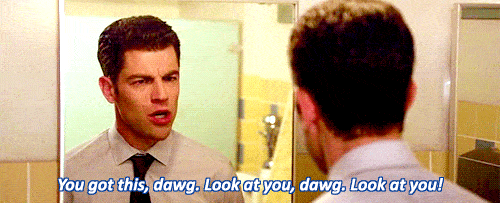How to Format Your Musical Theater Resume
Learn how to format your musical theater resume and how to make it stand out amongst the rest. It doesn’t have to be complicated.

While creating a musical theater resume can often seem like an extravagant gesture, it’s really no different than creating a resume for an office job. Sure, the format and styling is different, but the concept is the same: you wouldn’t go to an interview without your resume.
If you’ve never seen a musical theater resume before, it’s a two-sided, one page resume: one side being your headshot, and the other being the text portion of your resume. We’re going to walk you through each portion of the resume so when you go to your next audition, you’re able to present a polished and professional product!
The Headshot
Most likely, the first thing anyone is going to see on your resume is your headshot. It will be pretty hard to miss, considering your headshot will occupy an entire side of your resume! That being said, your headshot is very important, and it’s crucial that it provides an accurate representation of yourself. So, in order to get that perfect shot, here are some headshot do’s and don’ts:
DO:
- Find a photographer who understands lightning, portraits, and can really capture your personality on camera.
- Trust your photographer’s instincts (outdoor vs. indoor shoots, smiling vs. serious, etc.).
- Wear a color that complements your skin and brings out your eye color.
- Think about the role(s) you are auditioning for. If you naturally audition for fun and playful characters, your headshot should reflect that!
- Have 3 or 4 looks to choose from so you can decide which look you want to use based on your audition.
- Print your headshot on an 8 x 10 piece of photo paper to ensure your resume will fit nicely on the other side.
DON'T:
- Use an old headshot. Most headshots are good for 2 or 3 years, but if you’ve had any significant changes (hair cut, weight loss, etc.) then your photo should be updated.
- Wear distracting clothing or jewelry. The focus should be on your face.
- Go overboard with makeup and hair styling. You want to look like your everyday self!
- Over-edit your photos (smoothing wrinkles, lightening skin, etc.).
- Print your headshot on flimsy paper. Make sure you are using quality, sturdy photo paper.
Pro Tip: Print your headshot on matte photo paper to avoid fingerprints on the image.
The Written Resume
The written portion of your resume will be attached to the back of your headshot and will contain your:
- Physical attributes (the most common attributes listed are: eye color, hair color, height, and weight)
- Voice type and/or range
- Previous roles and shows
- Education
- Training
- Relevant experience
- Special skills
Because everyone has a different background of experience, there isn’t one specific way to format your resume. This might seem like added pressure, but we promise that your resume will look fantastic as long as you follow these resume do’s and don’ts:
DO:
- Print or attach your resume to the back of your headshot (both should be 8 x 10).
- Include valid and professional contact information (email address and/or phone number).
- Make your resume well-organized and easy to read.
- Include training and education backgrounds, including where you’ve studied or who you’ve studied under.
- Be prepared to demonstrate any skills you’ve listed.
- Tell the truth!
DON'T:
- Create a resume that exceeds one page.
- Attach reviews or clippings to your resume. It will only make your resume look cluttered and confusing.
- Make the font type smaller than 10 point.
- Make up or exaggerate any skills, roles, or accomplishments.
- Include your age. You can include your age range if you’d like, but age is usually irrelevant in casting.
Pro Tip: When possible, it’s a good idea to cater your resume to the role or role type you are auditioning for.
Examples of Musical Theater Resumes
To help you out even further, here are a few example resumes. The format of your resume will reflect your experience. However, you should make it your goal to fill up one page completely, so:
- If you feel you’re lacking in experience, beef up your education, training, relevant experience, and special skills.
- If you have too much experience, narrow it down to your most impressive shows and roles.
The following examples represent a two-sided resume: the headshot (left) being one side, and the written portion (right) being the other.
Pro Tip: You can create a resume easily with Google Slides, PowerPoint, or reuse one of the creative resume templates available online.
Frequently Asked Questions About the Musical Theater Resume
If you’re new to auditioning, you may have several questions about whether you should include certain aspects of your career or leave them out. You may wonder what to put on your resume if you’ve already listed your few credits and there’s a big white space underneath them. You can certainly talk about your training and education, but what if you don’t have much of that to speak of, either? Consider the following FAQs for help.
What Should Be On a Musical Theater Resume?
Include your education in the theater (if you have any) including any workshops and acting classes you’ve taken over the years. You can include your college degree regardless of whether it’s in theater or not. Backgrounds in literature, creative writing, or film production can often lend themselves to a basic understanding of theater and can be looked upon favorably by directors.
How Do I Write a Musical Theater Resume With No Experience?
If you’re struggling to format your resume, don’t be afraid to reach out to anyone you know in the theater world to ask for advice. Though acting has a reputation for being cutthroat and competitive, all actors have been where you are, and most will be more than happy to help you develop your resume or give you tips for your headshot.
It’s fine to have natural talent, and you may be a very good actor, but you may not get called in for an audition with a blank resume. Until you can put professional credits on your resume, you can always list high school productions, short films, and anything else you’ve starred in that may highlight your skills.
If you have absolutely no experience in the theater world, the first step would obviously be to seek out some kind of training — even if it’s just a workshop or two — and work on adding these certifications to your musical theater resume over time.
How Long Should a Musical Theater Resume Be?
Your resume should be one page long. Don’t make it longer than one page, or a casting director may not take a look at it. It’s ok if it’s a little shorter, especially if you have impressive roles and credits to boast of, or if you have extensive training in a certain area. If you’ve acted in front of the camera, go ahead and include these roles.
Don’t be tempted to forego the headshot and make a two-page written theater resume instead. Your headshot should be on one side, because — like it or not — your appearance is one of the most important pieces of the puzzle for a casting director who is sifting through piles of resumes to find the perfect actor for a role.
Can I Take My Own Headshots?
You can, but it’s probably not a good idea. Try to find a professional photographer who has worked with actors before, and pay him or her to take high-quality photos that will last for the next two or three years of your career. Prepare to pay professional rates for these headshots, and think of this as an investment in yourself and your future in musical theater.
Now that you’ve read all of the do’s and don’ts and seen a few examples, it’s time to get started on your own resume! We hope that these tips and tricks will help prepare you for some pretty awesome auditions. We know you’re going to crush it!

Related Posts:
- Vocal Audition Etiquette: 6 Things to Keep in Mind
- 7 Ways NOT to Choose Your Vocal Audition Piece
- 6 Tips to Help You in Your Musical Theatre College Prep


